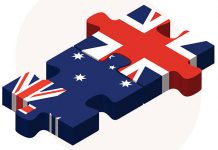Breaking news: coronavirus won’t be the number one enemy of the global economy in 2022. Instead, this year’s most significant risks will come from inflation and policymakers’ decisions in the recovery era from the consequences of the pandemic. Unfortunately, things are about to get worse before they get steadily better. This is roughly the belief economists have of the trajectory of US inflation in 2022.
In 2021, policymakers at the Federal Reserve and other central banks confidently shrugged off concerns about inflation, labor shortages, and supply chain bottlenecks as short-term consequences of the pandemic. Just give it some time, and these problems will be solved. That was the reasoning of central banks.
If this proves not true within the next 12 months, policymakers got it wrong, and the consequences will be worse than the COVID-19 recession.
How does the Federal Reserve see inflation?
The Fed stuck to the narrative that a large part of the inflation “surprise” during 2021 was due to the temporary rise in energy prices that affected the rest of the sectors, with transportation and shipping costs rising strongly, as supply problems increased, which led to strengthening the inaction of central banks.
However, by September, US inflation was at 6.8% annually, the highest level in 30 years and nearly three times the Fed’s forecast at the beginning of 2021. As a result, in December, the inflation narrative finally shifted from “it’s temporary” to “it’s taking a long time to calm down, and may need a push to move on.”
Markets are now betting that the Federal Reserve will raise interest rates at least three times in 2022 to withdraw stimulus and cheap money from the markets in an attempt to control inflation as quickly as possible after it reached its highest level in 40 years in December (7.1%).
The US economy will grow despite high inflation
Bloomberg expects the US economy to grow by 4.4% during the first half of 2022 and then slow to 2.7% in the second half of the year.
One of the main reasons the US economy will grow is that most American consumers still have money to spend — that $2.6 trillion stimulus in household bank accounts the US government gave them. These funds will help support demand and revive the economy.
When will inflation decline in the United States?
(1) The supply chains are expected to become somewhat more organized later in the year.
(2) It is unlikely that there will be a repeat of the exceptional lockdown period that we saw at the beginning of the coronavirus. Some commodities, including oil, have already surpassed their record pandemic heights.
(3) The Fed has begun to tighten its monetary policy, and these factors are supposed to tip the scales towards lower inflation rates. Add all that together, and you’ll see why most economists expect inflation to slow to less than 3% by the end of 2022.













